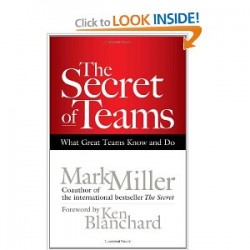Great teams can propel organizations to new levels of success. Today we're looking at how to improve team performance with an approach that has proven results across a spectrum of cultural, geographic, and generational challenges. A few years ago The Orange Revolution was written by Adrian Gostick and Chester Elton. The book focuses on great teams and where they come from. According to the authors, there are four things that skilled leaders do in order to develop great teams.
- Ensure the right people join
- Translate corporate goals into team goals
- Facilitate great team conduct
- Promote a culture of appreciation
 When looking at teambuilding through that list of requirements, it's easy to see how each of these elements can tie into the plan. Let's break it down to each individual component and discuss each in turn.
When looking at teambuilding through that list of requirements, it's easy to see how each of these elements can tie into the plan. Let's break it down to each individual component and discuss each in turn.
Ensure the right people join
This is the crucial first step. Especially when looking at cross-cultural teams that might involve language barriers, geographical distance, or other difficult pieces, it's important to select the correct individuals that will “mesh†with each other and be able to collaborate effectively.
Translate corporate goals into team goals
This is often one of the more difficult pieces for team members to understand. Many are familiar with individual goals, but translating those up into top level team goals and overarching corporate goals can be more challenging. The essential power of a good team comes when each member understands the unified purpose and works toward a common goal.
Facilitate great team conduct
The majority of people have worked with a team that didn't get along well. The variety of attitudes, beliefs, and behaviors in the workplace virtually guarantees that there will be occasional friction; however, a good team lead will help to reduce that friction and enable each person to contribute to their fullest abilities.
Want to learn more about leading a team? Check out How to Manage a Team.
Promote a culture of appreciation
Sometimes, a difficult piece of working with a team could be a lack of individual appreciation for a job well done. Helping each team member understand how they can provide appreciation and recognition to their peers will increase overall satisfaction within and among the group.
These four key elements to building great teams are a great reminder that there is substantial potential for great performance in a well-built team.
 This group was designed to help government contractors in our local area. The group focuses mainly on the laws and executive orders that impact employers in our area, so the niche is fairly specific. However, since Huntsville contains a high concentration of government contractors relative to other industries, it’s actually a fairly well-attended group.
This group was designed to help government contractors in our local area. The group focuses mainly on the laws and executive orders that impact employers in our area, so the niche is fairly specific. However, since Huntsville contains a high concentration of government contractors relative to other industries, it’s actually a fairly well-attended group.
 Recently I learned of a unique team building session idea that I have been itching to try out. I was able to wrangle a friend into testing it out at her office, and it had very positive results. Today we’ll be looking at what I’ve come to call the Twenty Minute Challenge. (I heard someone at
Recently I learned of a unique team building session idea that I have been itching to try out. I was able to wrangle a friend into testing it out at her office, and it had very positive results. Today we’ll be looking at what I’ve come to call the Twenty Minute Challenge. (I heard someone at  What are the benefits of team building? How can you use team building strategies to grow and develop a team that is agile, talented, and cohesive? Do you have to actively work to develop your team, or is hiring the right people enough?
What are the benefits of team building? How can you use team building strategies to grow and develop a team that is agile, talented, and cohesive? Do you have to actively work to develop your team, or is hiring the right people enough?